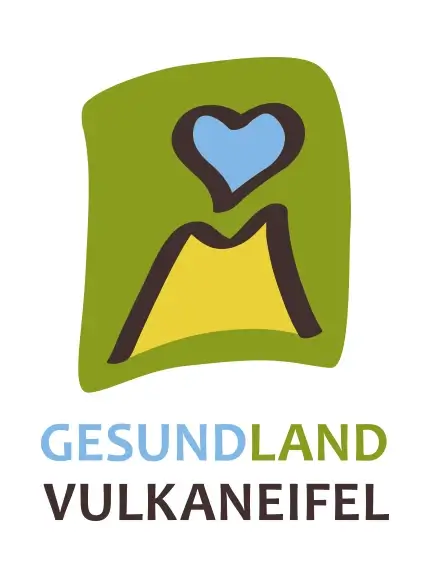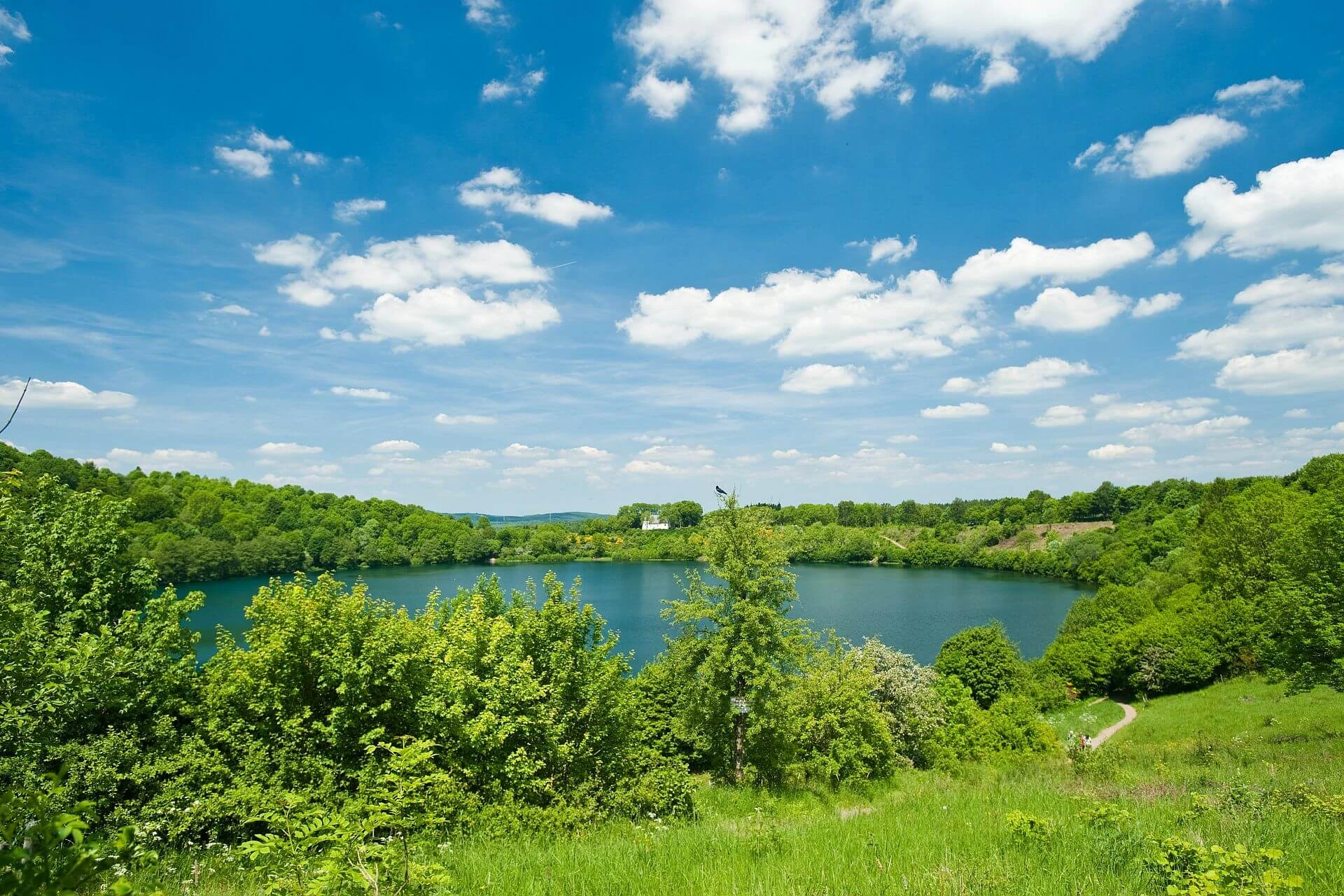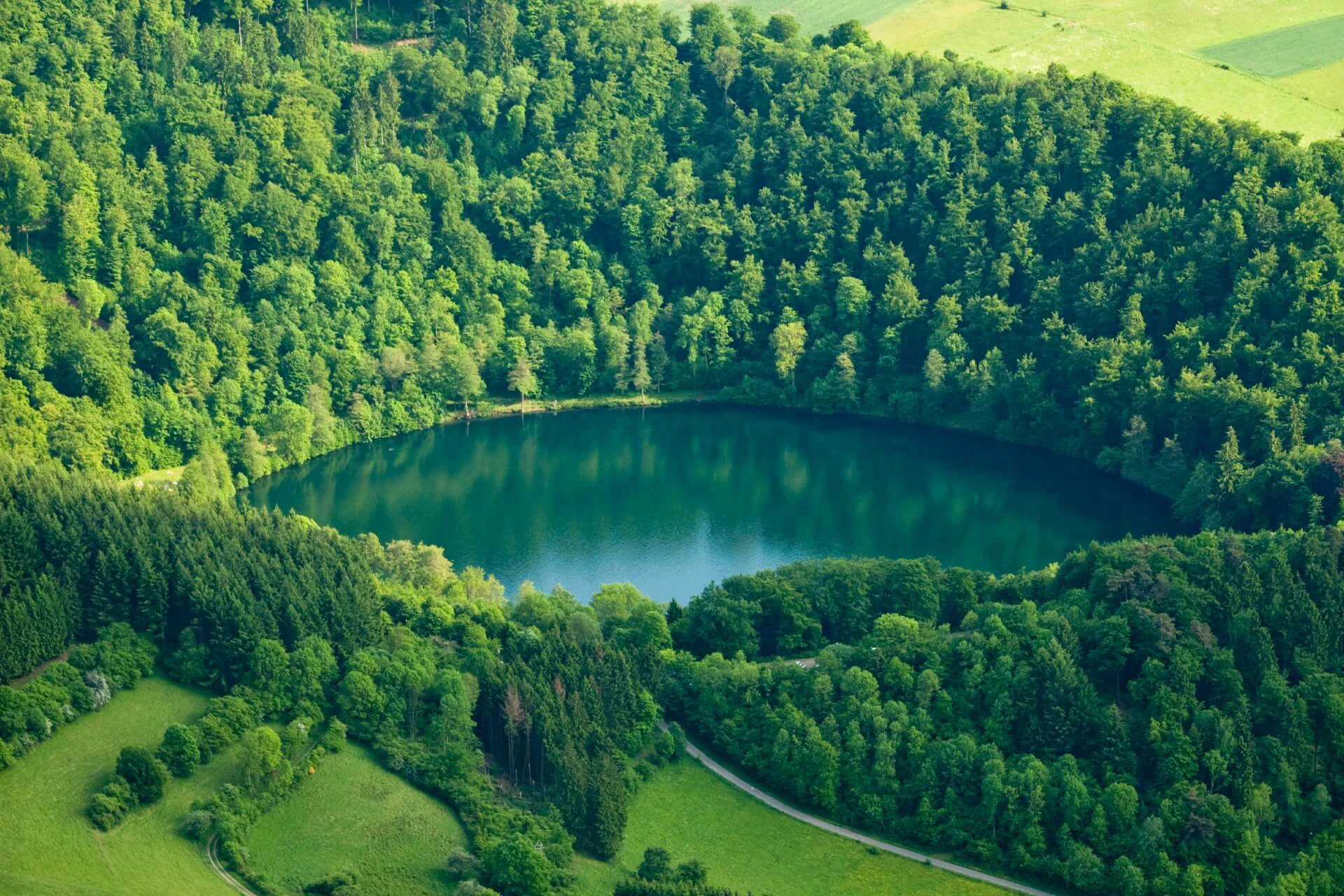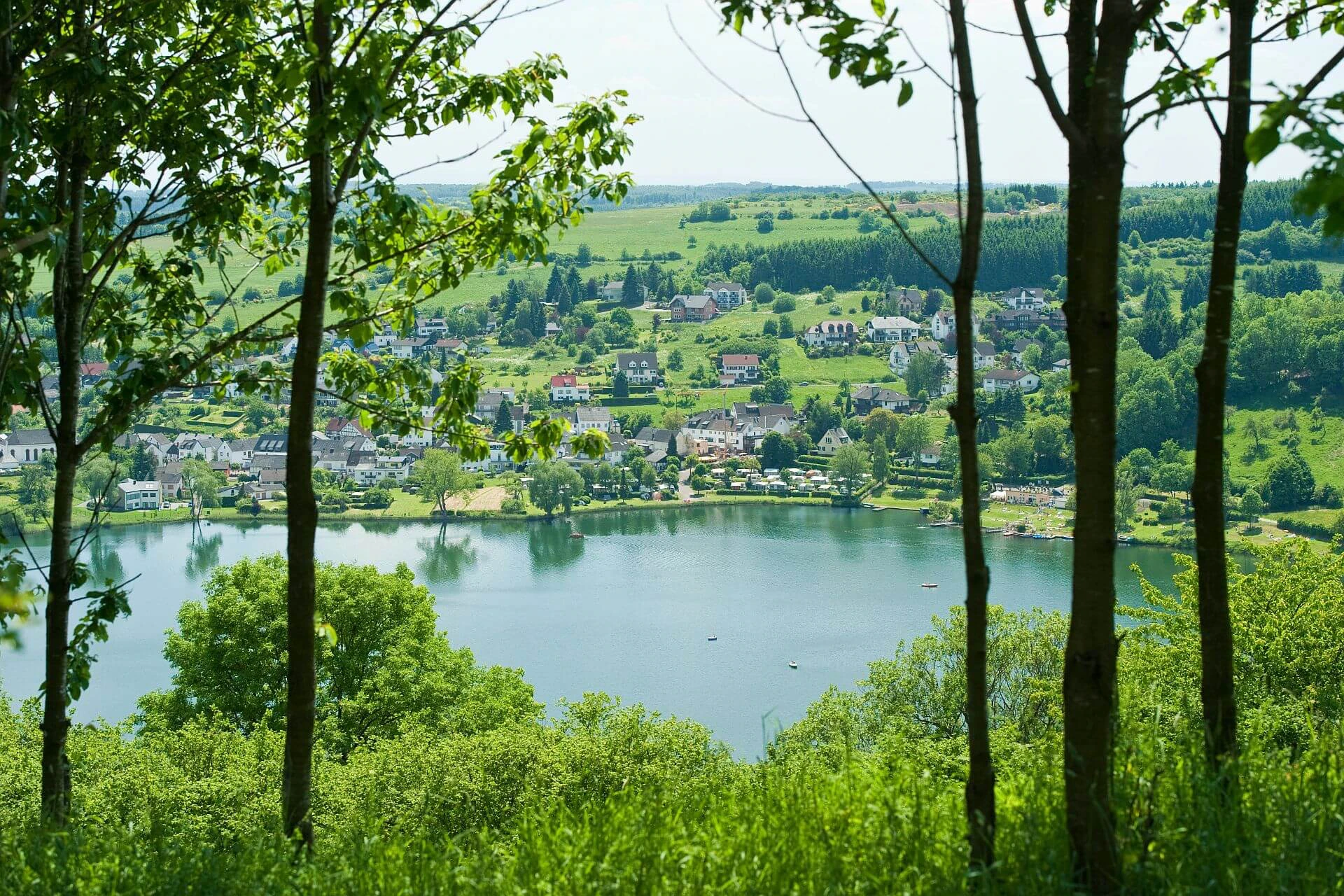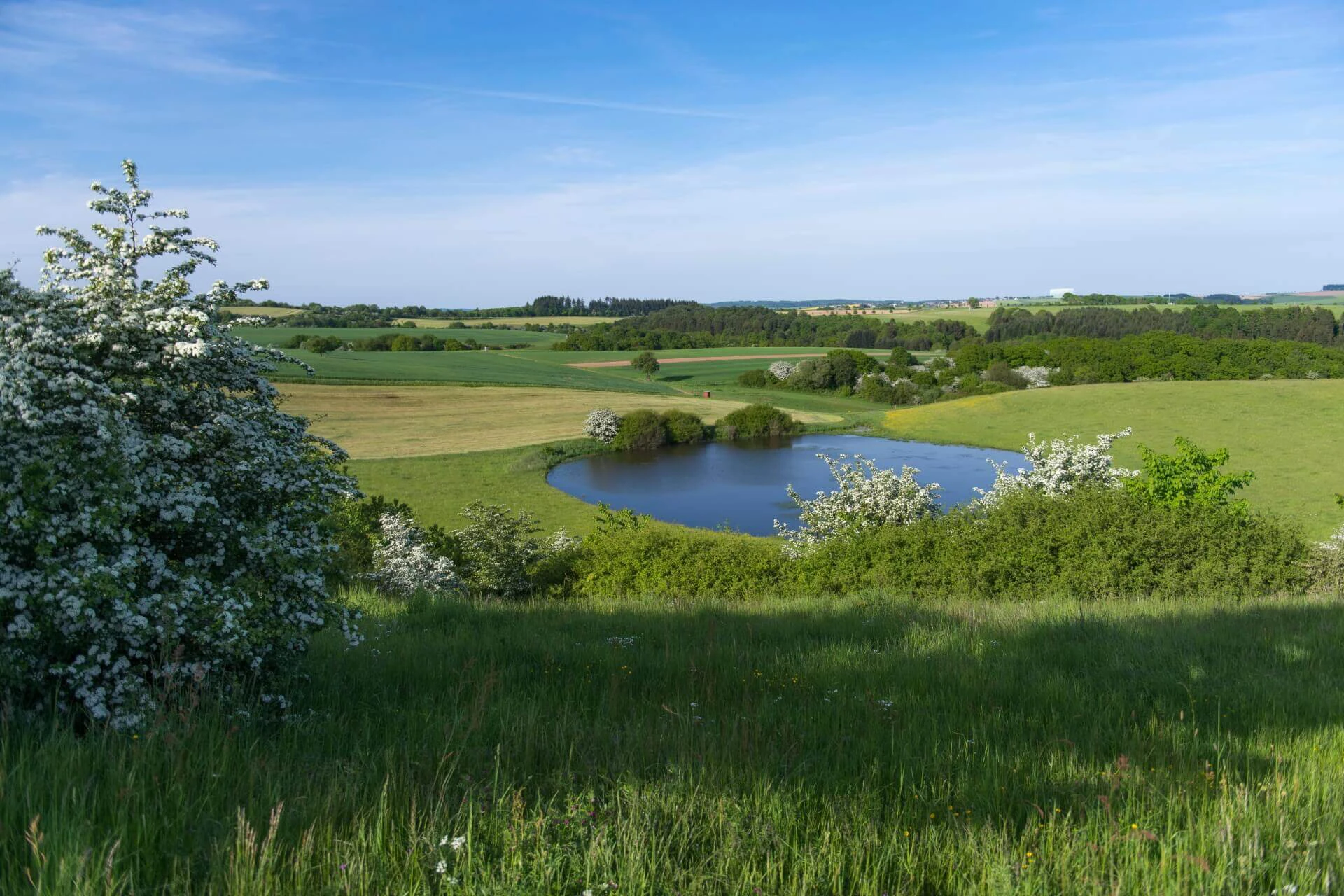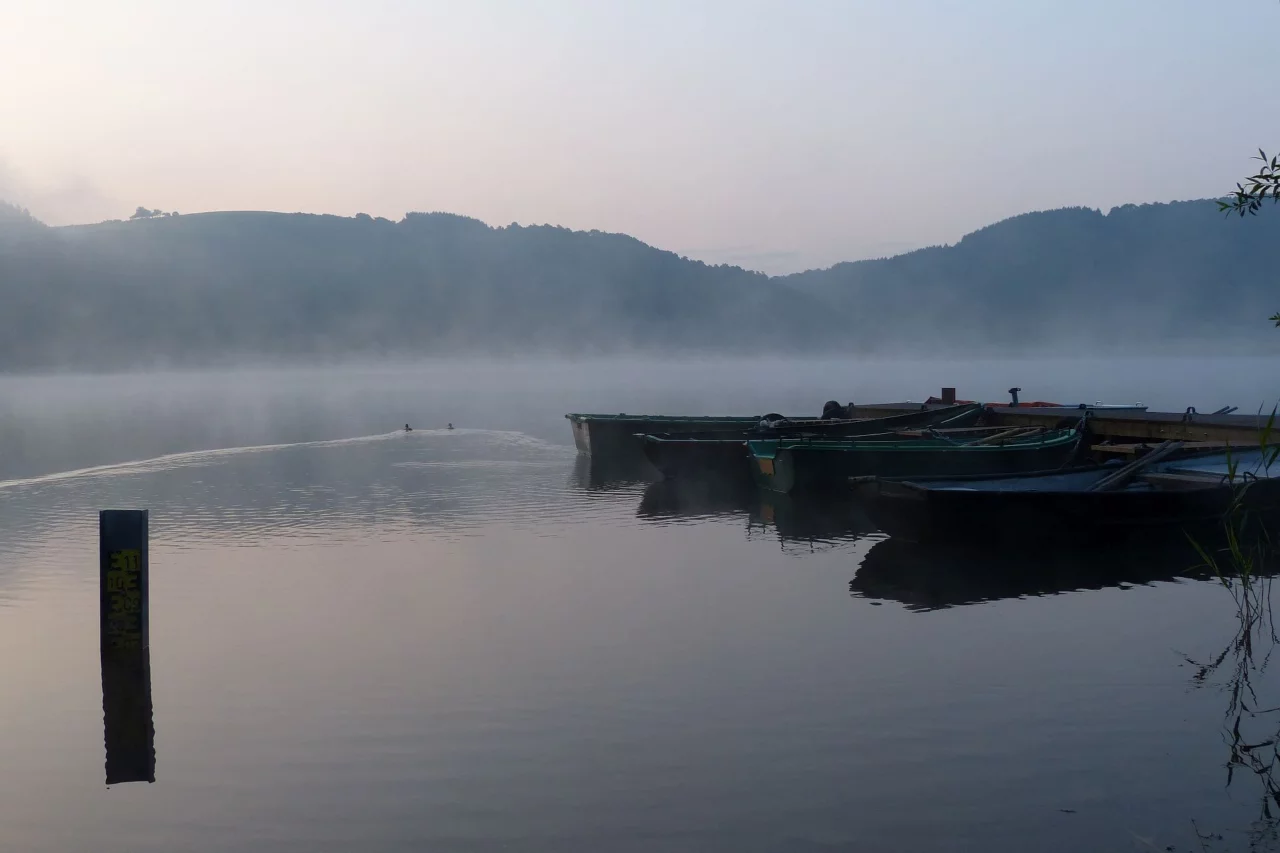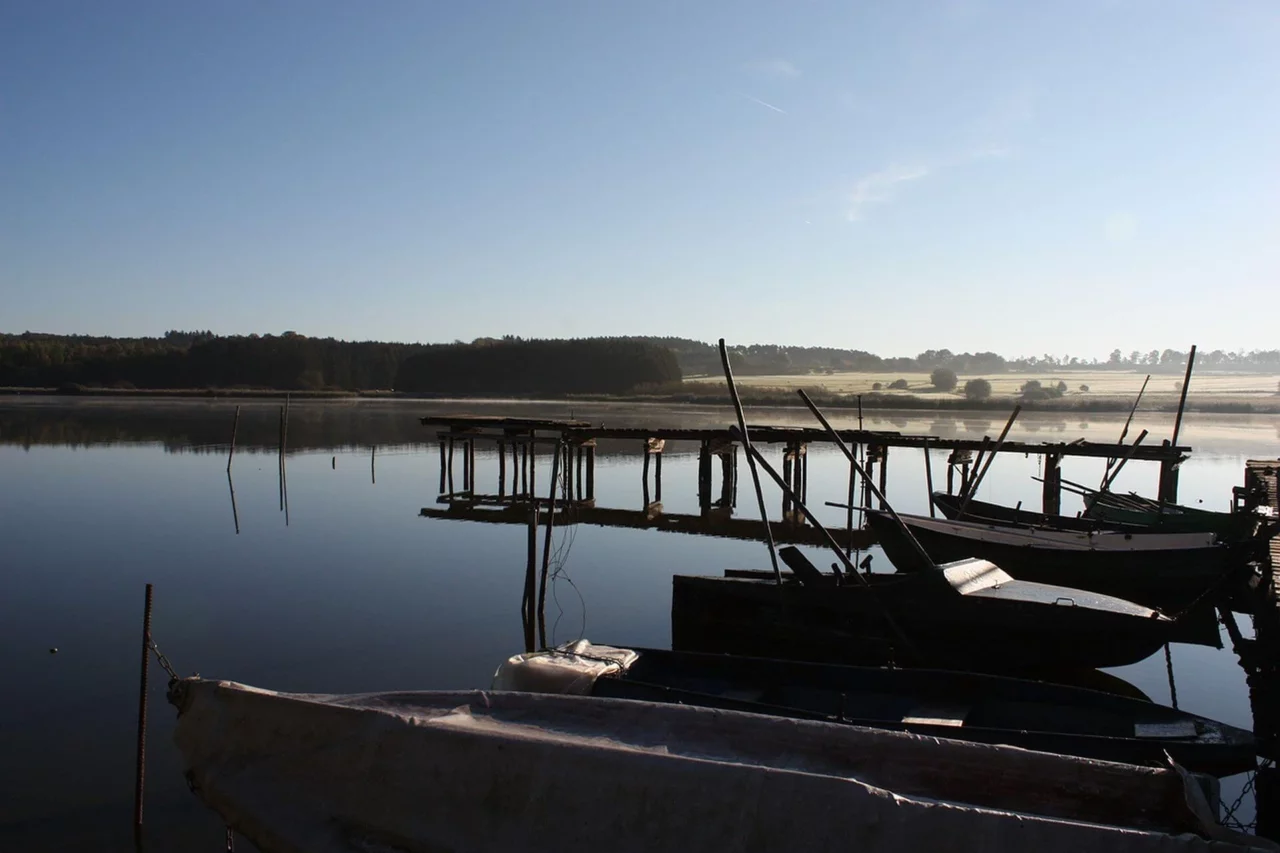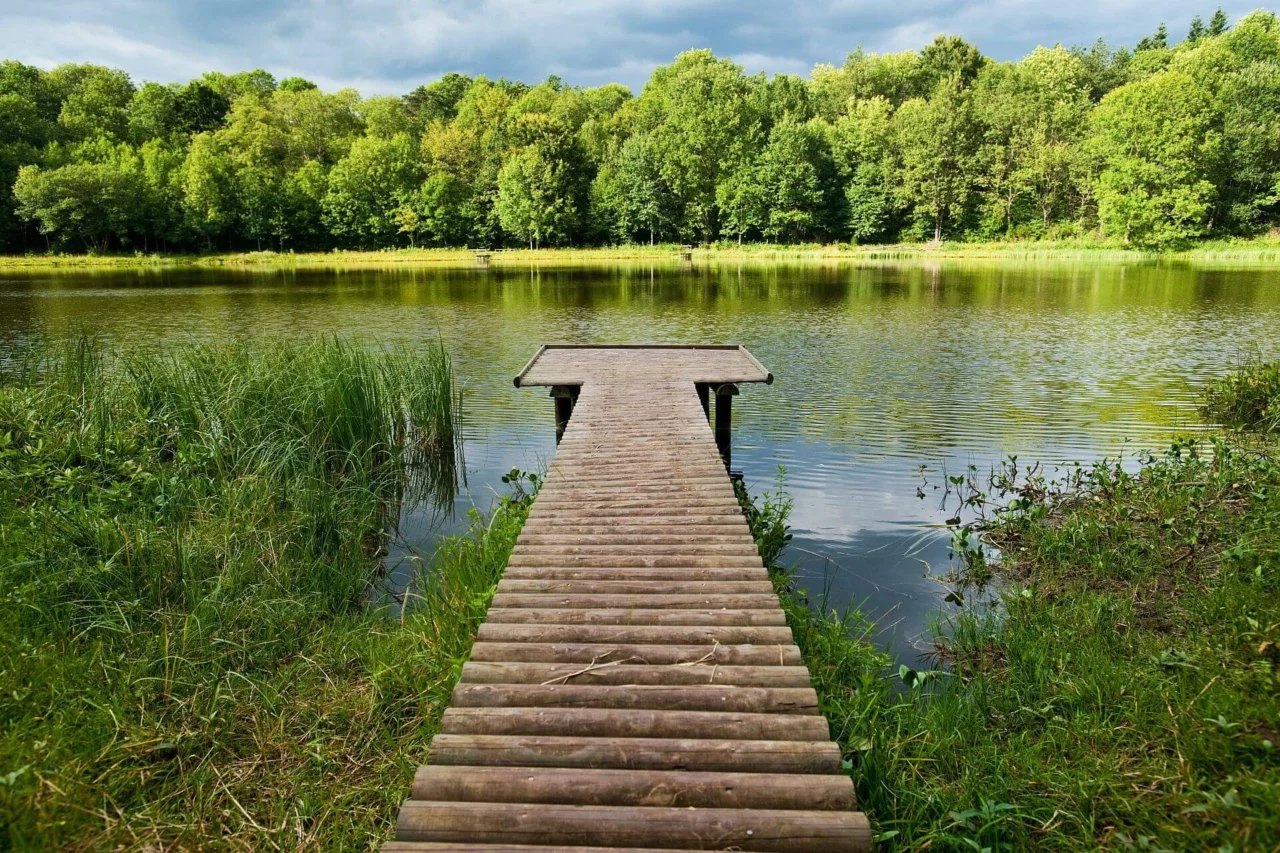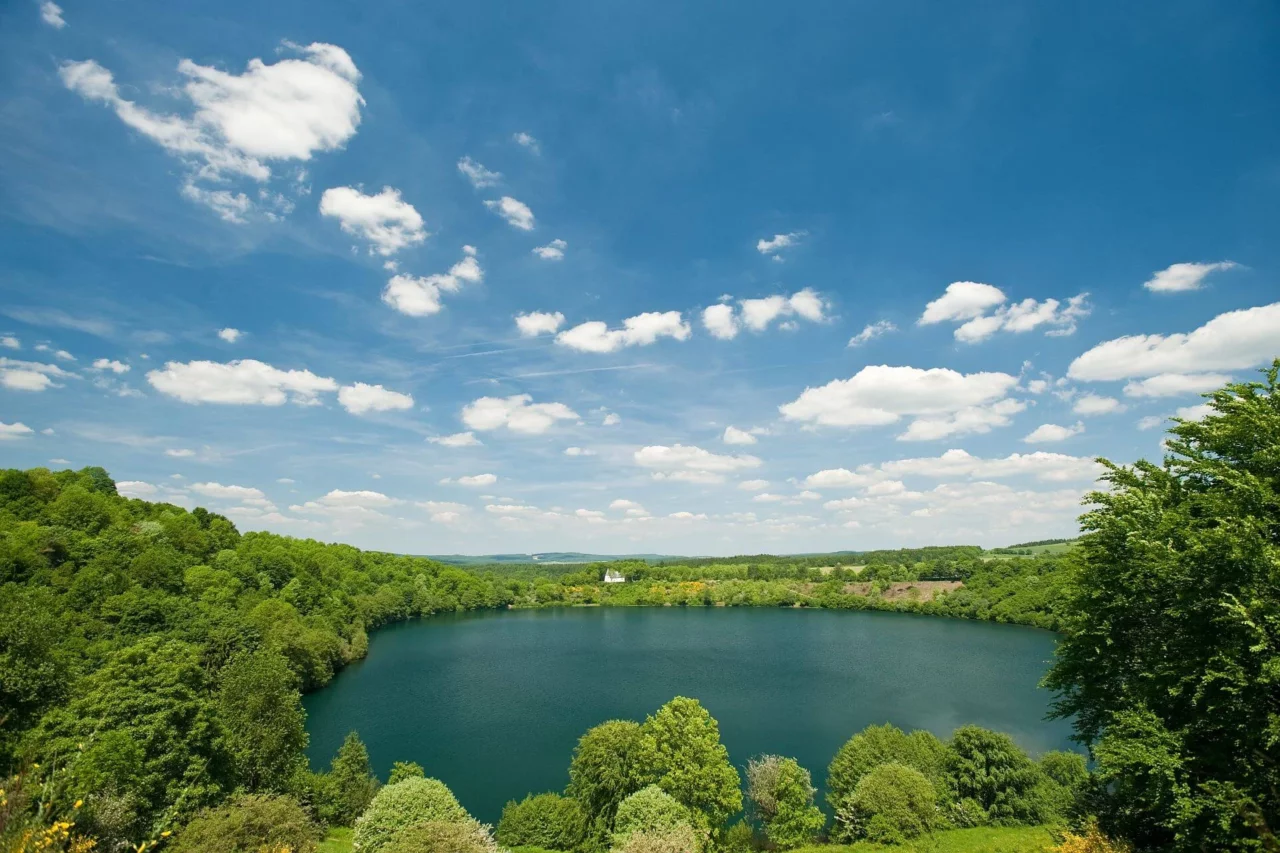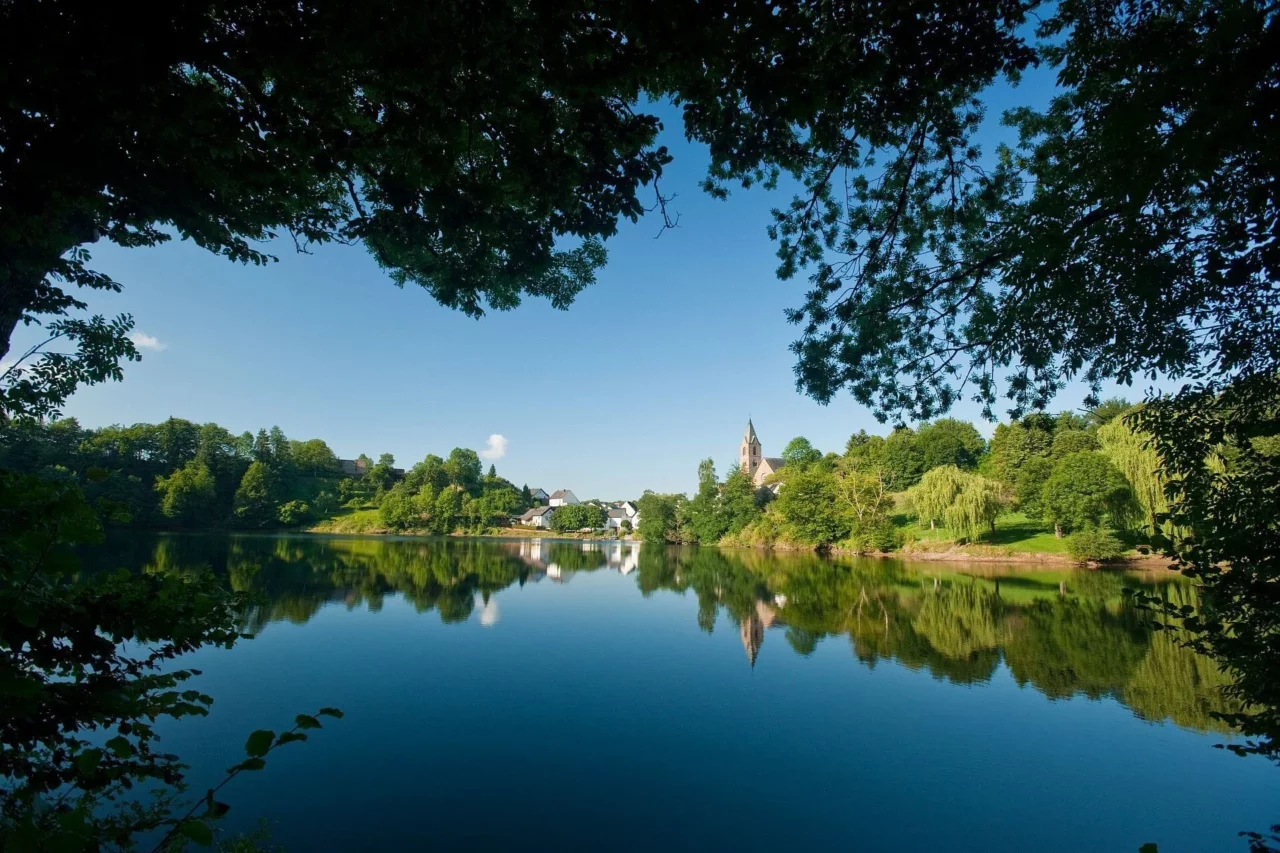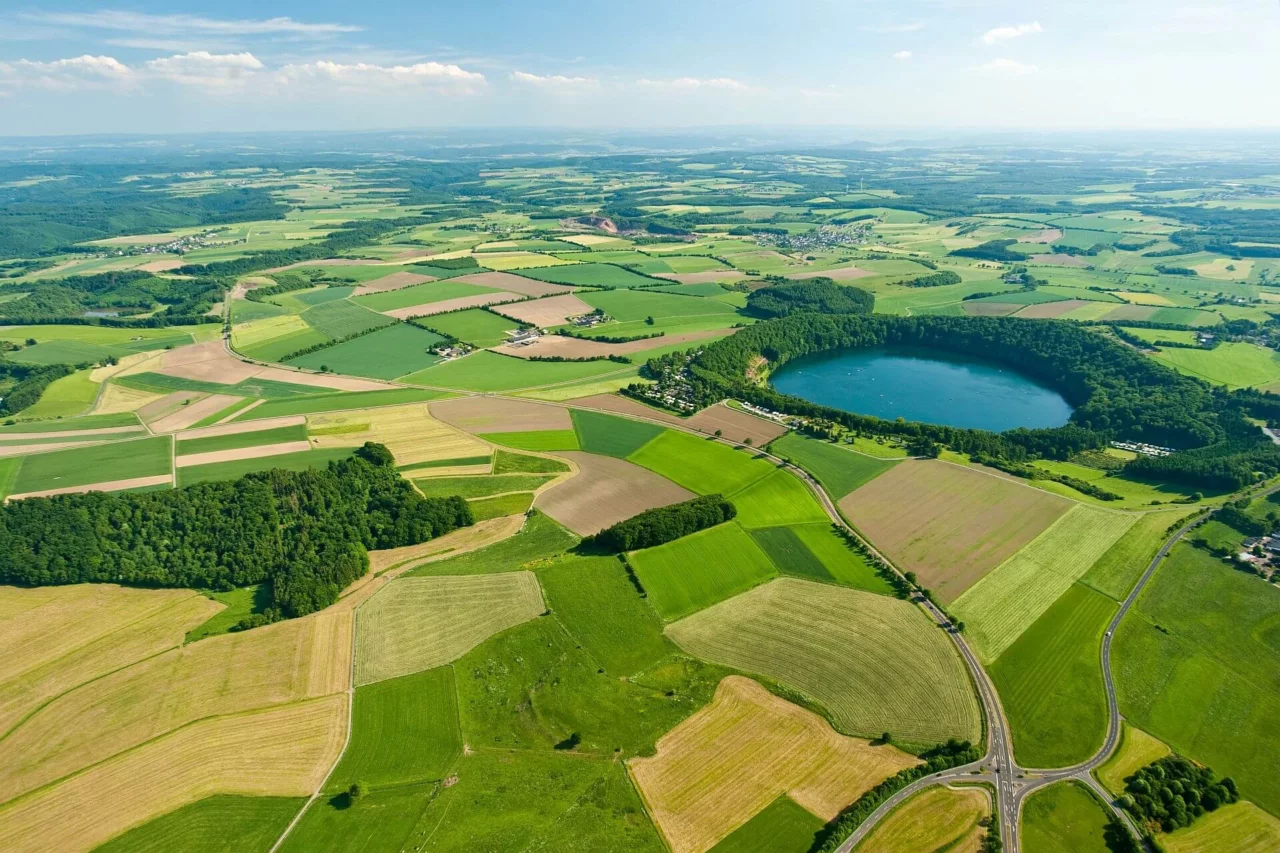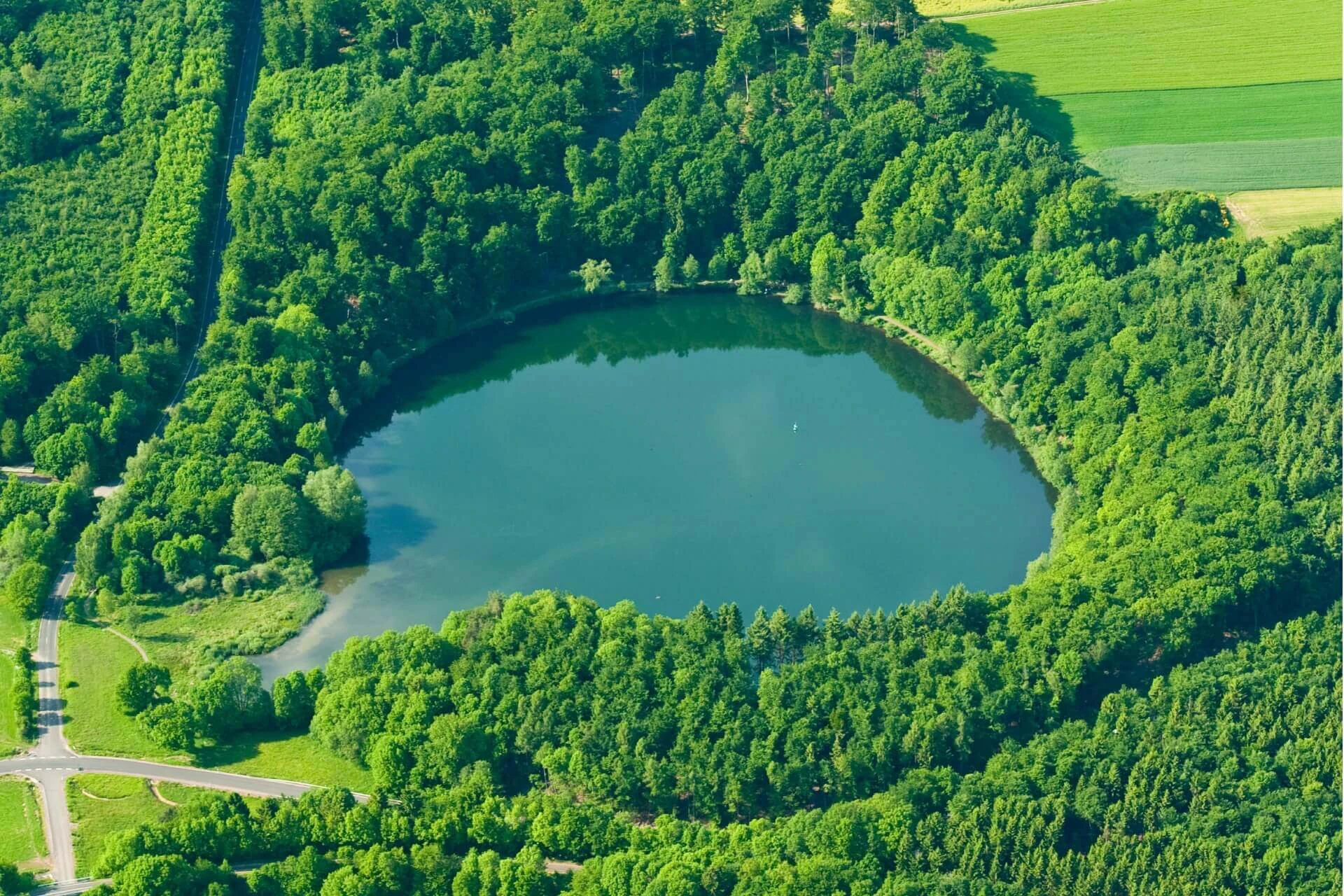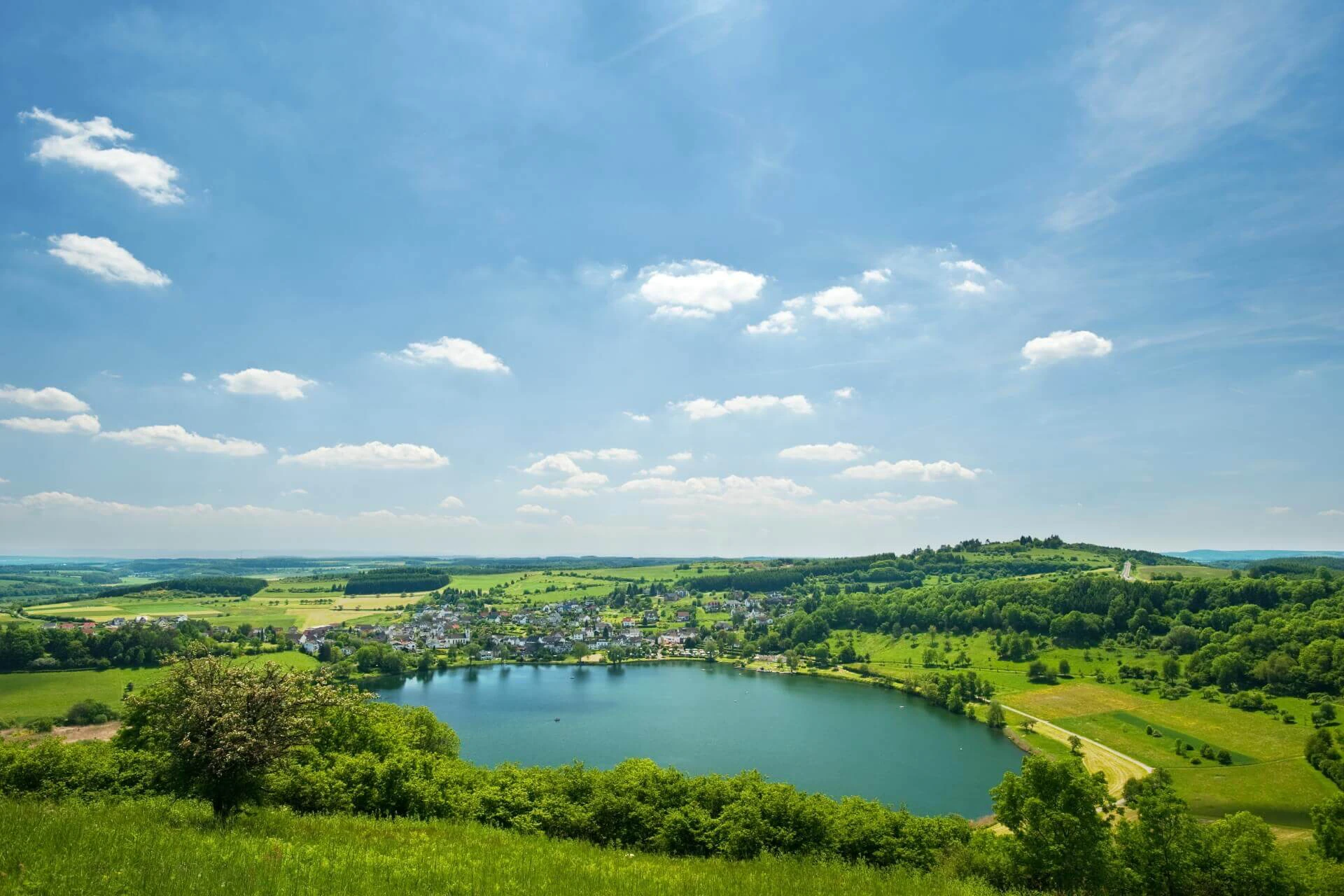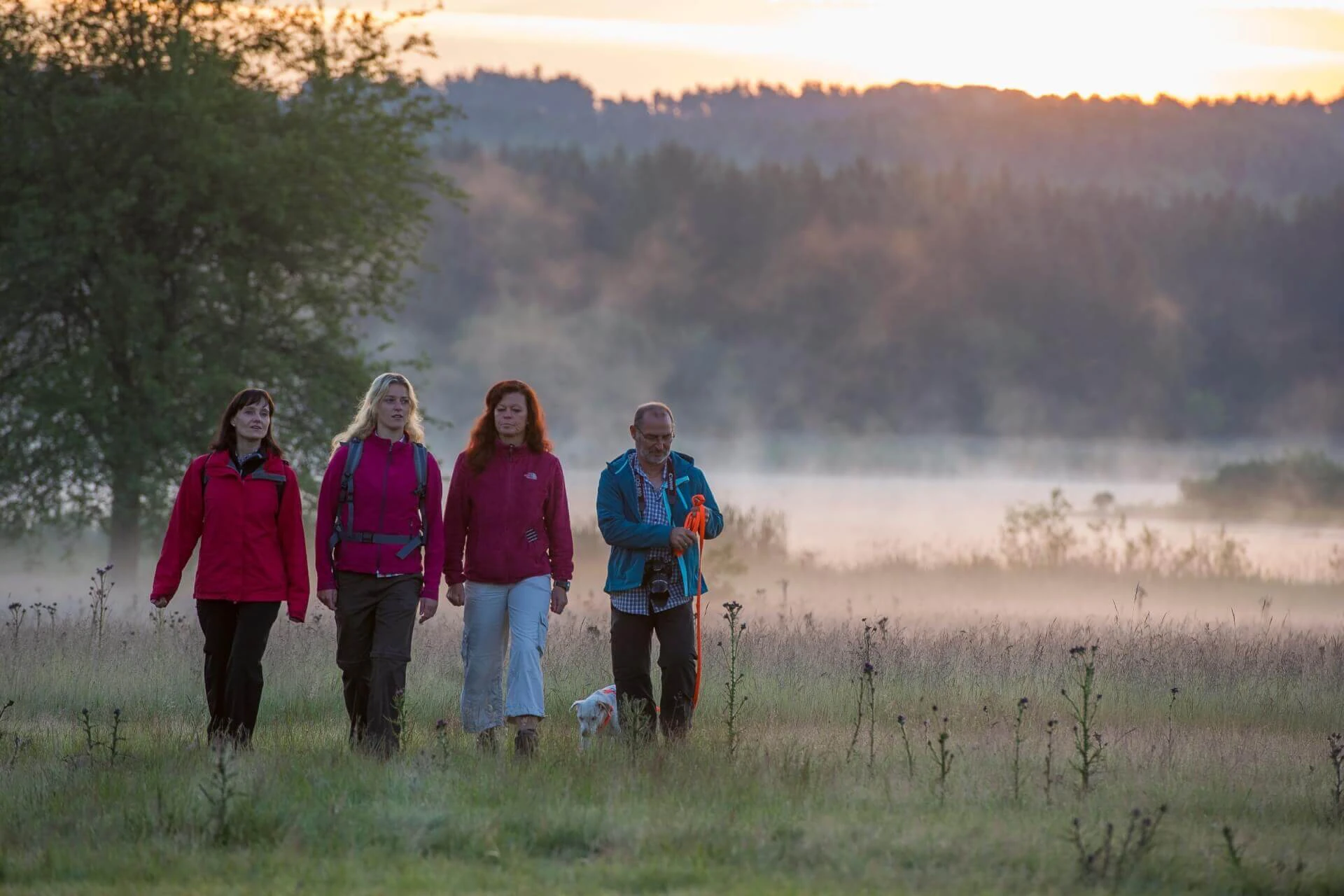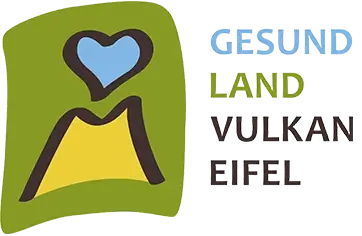Hikers let the wild donkeys accompany them part of the way.
The blue eyes of the Eifel
Peaceful. Fascinating. Captivating.

Deep blue. Crystal clear. Ancient. The maars of the volcanic Eifel.
What was created thousands of years ago by mighty forces of nature can hardly be surpassed in beauty today. Twelve maars filled with water make the volcanic Eifel a unique and colorful natural scenery. The crystal clear water sparkles in the sun, the clouds reflect on the surface. Get to know these magical places during a hike along the shore - and in some volcanic craters you may also swim and bathe.
... Read moreSie sehen gerade einen Platzhalterinhalt von Standard. Um auf den eigentlichen Inhalt zuzugreifen, klicken Sie auf den Button unten. Bitte beachten Sie, dass dabei Daten an Drittanbieter weitergegeben werden.
Weitere InformationenAround the Maar
The most beautiful paths along the maars

Almost every maar invites you to walk around it. The dreamlike paths around the quiet waters let the hiker feel the vitality of the Eifel. Just follow the signs to the maars, parking lots can usually be found directly at the blue lakes.
Our maars in the overview
All info about location and how to get there can be found here
Let the soul dangle
Nature experiences for hikers and connoisseurs

